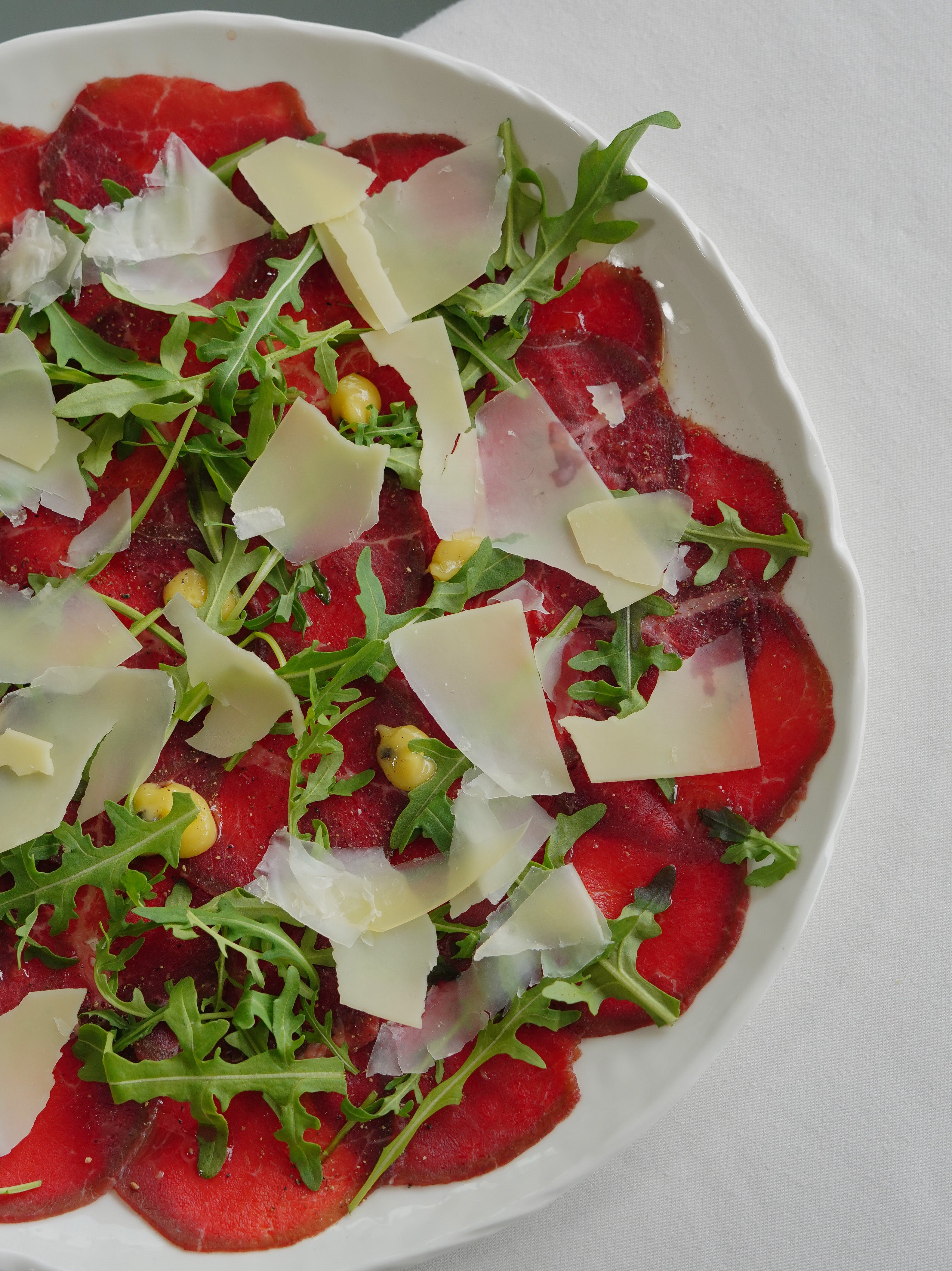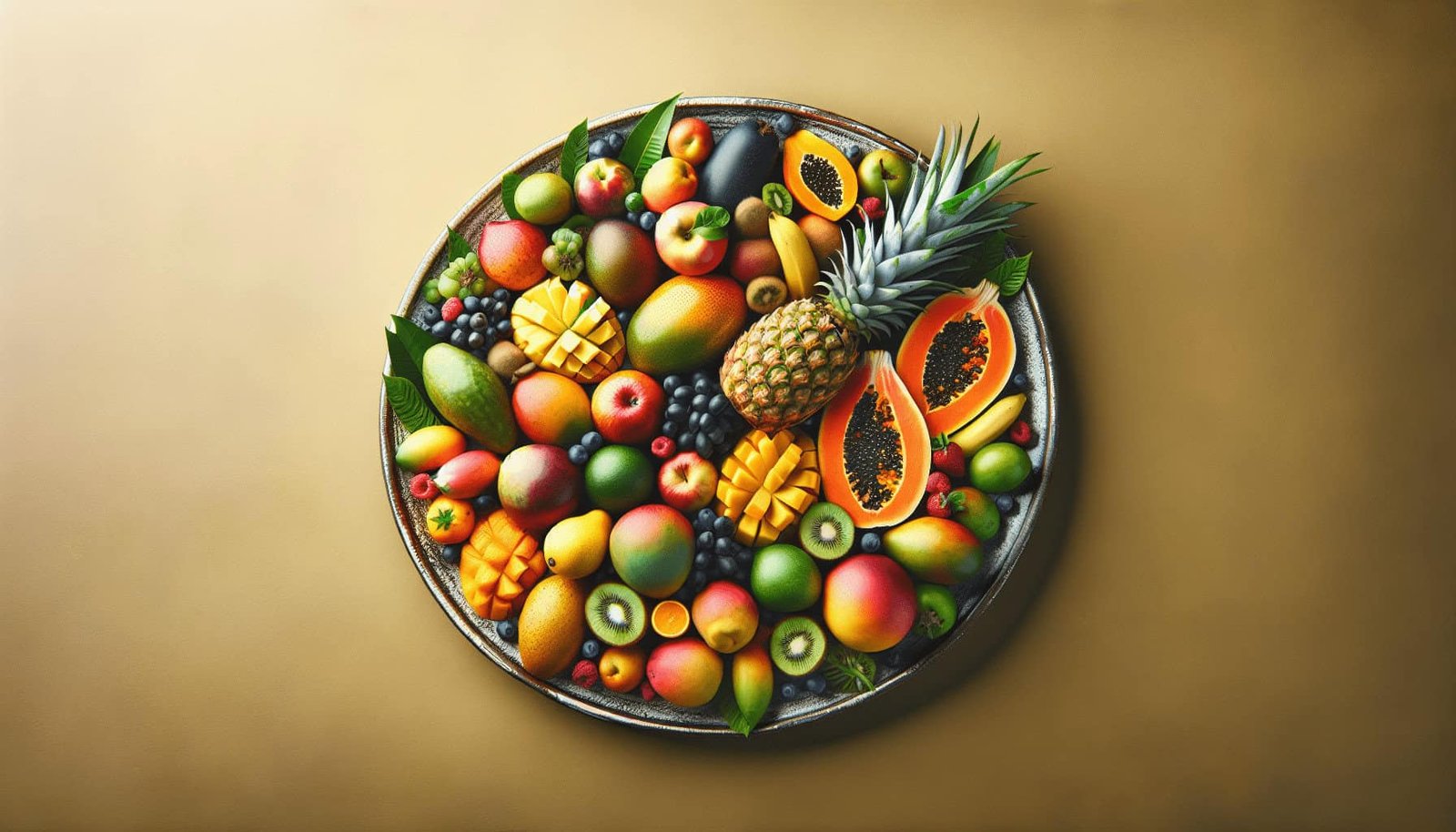Nicaragua is a treasure trove of culinary delights that often go unexplored. From vibrant tropical fruits to indigenous root vegetables, the local produce of Nicaragua offers a tantalizing array of flavors waiting to be discovered. Are you ready to embark on a gastronomic adventure and unearth the rare gems of Nicaraguan cuisine? Well, look no further! In this article, we will guide you through a mouthwatering journey, suggesting Nicaraguan dishes that showcase the unique and rare varieties of local produce. Get ready to tantalize your taste buds and experience the rich culinary heritage of Nicaragua like never before!

Introduction to Nicaraguan cuisine
Nicaraguan cuisine has a rich and diverse culinary heritage that is influenced by its geographical location and indigenous cultures. The combination of native ingredients and flavors has resulted in a unique gastronomic experience that is beloved by locals and visitors alike. In this article, we will explore the traditional ingredients and flavors that define Nicaraguan cuisine, as well as the emphasis on using local produce.
Overview of Nicaraguan cuisine
Nicaraguan cuisine is known for its simplicity and focus on natural flavors. It is characterized by the use of fresh and locally sourced ingredients, such as corn, beans, plantains, and various tropical fruits. The cuisine also incorporates a wide range of herbs and spices, which add depth and complexity to the dishes. Nicaraguan cuisine is diverse, with regional variations reflecting the influences of the Caribbean, Spanish, and indigenous cultures.
Traditional ingredients and flavors
The traditional ingredients of Nicaraguan cuisine are largely sourced from the fertile land and abundant waters of the country. Corn, also known as maize, is a staple ingredient and forms the basis of many Nicaraguan dishes. It is used to make tortillas, tamales, and other corn-based products. Beans, particularly red beans, are another essential component of Nicaraguan cuisine. They are often cooked with various spices and served as a side dish or as part of a main course.
In addition to corn and beans, plantains play a prominent role in Nicaraguan cuisine. These starchy bananas are used in both savory and sweet dishes, such as tostones (fried plantains) and maduros (sweet plantains). Other common ingredients include yuca (cassava), sweet potatoes, tomatoes, onions, garlic, and various tropical fruits such as mangoes, papayas, and pineapples.
The flavors of Nicaraguan cuisine are earthy, vibrant, and well-balanced. It combines the sweetness of tropical fruits with the savory flavors of meat and spices. Traditional Nicaraguan dishes often feature a blend of herbs and spices, such as achiote, cumin, cilantro, and oregano, which infuse the dishes with layers of flavor. The cuisine also incorporates tangy ingredients like sour oranges and limes to add a refreshing twist to the dishes.
Emphasis on local produce
Nicaraguan cuisine places a strong emphasis on using locally sourced produce. This not only supports local farmers and small-scale producers but also ensures that the dishes are made with the freshest and most flavorful ingredients. The focus on local produce is rooted in the country’s commitment to sustainable agriculture and conservation efforts.
By prioritizing local produce, Nicaraguan cuisine celebrates the diversity of the country’s ecosystems and promotes the preservation of endangered crops. It also allows for the integration of unique and rare varieties of local produce into traditional recipes, resulting in dishes that are both delicious and culturally significant.

Unique or rare varieties of local produce in Nicaragua
Nicaragua is home to a wide variety of unique and rare produce that adds depth and flavor to its cuisine. Exploring these ingredients not only provides a fascinating culinary experience but also supports the conservation of biodiversity and traditional farming practices.
Exploration of unique or rare produce
One such unique ingredient is the “xiaoxue,” also known as the “little snow” fruit. This white, pear-shaped fruit is native to Nicaragua and has a crisp texture and a subtle sweet flavor. It is often used in salads or as a garnish for drinks, adding a refreshing touch to the dishes.
Indigenous crops and their significance
Indigenous crops, such as the “makuna,” play a significant role in Nicaraguan cuisine. The “makuna” is a root vegetable similar to the yam, and it is widely used in traditional dishes like soups and stews. Its starchy texture and slightly sweet taste make it a versatile ingredient that adds depth and substance to the recipes.
Endangered or lesser-known ingredients
There are also ingredients in Nicaragua that are at risk of extinction or are lesser-known. For instance, the “taro” root, also known as “malanga,” is a popular ingredient in Nicaraguan cuisine, but its cultivation is dwindling due to the introduction of alternative crops. By showcasing these ingredients in traditional dishes, Nicaraguan cuisine helps raise awareness about their importance and supports efforts to preserve them.
Traditional Nicaraguan dishes showcasing unique produce
Nicaraguan cuisine offers a range of traditional dishes that showcase the unique produce of the country. These dishes not only highlight the flavors of local ingredients but also celebrate the culinary heritage of Nicaragua.
Nacatamal: A tamale-like dish filled with native ingredients
Nacatamal is a traditional Nicaraguan dish that resembles a tamale. It is made with masa (corn dough) filled with a variety of ingredients, such as pork, chicken, vegetables, and spices. The filling often includes unique produce like “zapallo” (a type of squash), “jocote” (a tropical fruit), and “vegetales de güirila” (a mixture of local root vegetables). The combination of these ingredients creates a flavorful and hearty dish that is typically enjoyed during special occasions and holidays.
Indio Viejo: A hearty stew featuring unique vegetables
Indio Viejo is a traditional Nicaraguan stew that is known for its rich flavors and hearty texture. It is made with shredded beef or chicken, corn masa, and a variety of vegetables such as tomatoes, onions, bell peppers, and “mecatillo” (a type of root vegetable). The inclusion of these unique vegetables adds depth and complexity to the dish, making it a comforting and satisfying meal.
Vigorón: A popular dish with unusual root vegetables
Vigorón is a popular street food dish in Nicaragua that showcases the unique root vegetables of the country. It consists of yuca (cassava), “chicharrón” (fried pork belly), and a cabbage slaw called “curtido.” The combination of these ingredients creates a harmonious balance of flavors and textures, with the root vegetables providing a starchy base and the curtido adding a tangy and crunchy element.
Güirila: A corn pancake highlighting local corn varieties
Güirila is a traditional corn pancake that is popular in Nicaragua. It is made with masa (corn dough) and cooked on a griddle until crispy on the outside and soft on the inside. What makes güirila unique is the use of local corn varieties, such as “quequisque” and “maíz criollo,” which have distinct flavors and textures. The pancake is often served with cheese and sour cream, creating a savory and satisfying dish.
Tiste: A traditional beverage made from native ingredients
Tiste is a traditional Nicaraguan beverage that is typically enjoyed during festive occasions. It is made from cocoa, corn masa, cinnamon, and spices, giving it a rich and chocolatey flavor. Tiste is often served chilled and topped with ground peanuts, creating a creamy and indulgent drink that highlights the native ingredients of Nicaragua.

Exploring lesser-known Nicaraguan ingredients
Nicaragua is home to a variety of lesser-known ingredients that are worth exploring. These ingredients, often used in traditional recipes, add unique flavors and textures to Nicaraguan cuisine.
Palo de Mayo: A tropical fruit used in various dishes
Palo de Mayo, also known as Maypole, is a tropical fruit that is used in various Nicaraguan dishes. It has a sweet and tangy flavor with hints of citrus and is often added to fruit salads, beverages, and desserts. The vibrant color and refreshing taste of Palo de Mayo make it a delightful addition to both sweet and savory dishes.
Jícaro: A gourd-like fruit with versatile uses
Jícaro is a gourd-like fruit native to Nicaragua that has versatile uses in the country’s cuisine. The fruit is hollowed out and used as a natural vessel for serving traditional dishes such as soups, stews, and sauces. It is also used to make jícaro cups, which are popular for drinking local beverages like “chicha” and “pinolillo.” The natural properties of the jícaro fruit make it an eco-friendly alternative to disposable containers.
Nispero: An exotic fruit adding flavor to desserts and cocktails
Nispero is an exotic fruit that adds a unique flavor to Nicaraguan desserts and cocktails. It has a sweet and slightly tart taste, reminiscent of apricots or peaches. Nispero is often incorporated into desserts like cakes, pies, and custards, adding a tropical twist to traditional recipes. It is also used in cocktails, lending its distinctive flavor to refreshing drinks.
Pejibaye: A starchy fruit with a unique taste
Pejibaye is a starchy fruit that is commonly used in Nicaraguan cuisine. It has a unique taste that is often described as a combination of chestnuts and potatoes. Pejibaye is typically boiled or roasted before being added to dishes like soups, stews, and rice dishes. Its creamy texture and nutty flavor make it a versatile ingredient that adds richness and depth to recipes.
Pitahaya: A vibrant fruit enhancing both sweet and savory dishes
Pitahaya, also known as dragon fruit, is a vibrant fruit that enhances both sweet and savory dishes. It has a mild and slightly sweet taste, with a refreshing texture similar to kiwi. Pitahaya is often used in salads, smoothies, and desserts, adding a pop of color and tropical flair to the dishes. It can also be grilled or roasted and served as a side dish or topping for savory recipes.
Sustainable agriculture and conservation efforts in Nicaragua
In recent years, there has been an increasing focus on sustainable agriculture and conservation efforts in Nicaragua. These initiatives aim to protect biodiversity, preserve traditional farming practices, and support local farmers and small-scale producers.
Farm-to-table initiatives promoting local produce
Farm-to-table initiatives have gained popularity in Nicaragua, with restaurants and food establishments sourcing their ingredients directly from local farmers. This not only ensures the freshest and highest quality produce but also supports the local economy and reduces the carbon footprint associated with long-distance transportation. By promoting local produce, these initiatives play a crucial role in preserving Nicaraguan culinary heritage.
Preservation of endangered crops
There are various crops in Nicaragua that are at risk of extinction due to factors such as climate change, deforestation, and the introduction of alternative crops. Efforts are being made to preserve these endangered crops by promoting their cultivation and consumption. Organizations and institutions are providing support to farmers, encouraging the use of sustainable agricultural practices, and raising awareness about the importance of these crops in Nicaraguan cuisine.
Community-led conservation projects
Community-led conservation projects are playing a significant role in Nicaragua in protecting biodiversity and indigenous agricultural practices. These projects are initiated and managed by local communities, empowering them to take ownership of their natural resources and traditional knowledge. By preserving traditional farming techniques and promoting the cultivation of unique varieties of local produce, these projects ensure the continuation of Nicaraguan culinary traditions for future generations.
Efforts to protect biodiversity
Nicaragua is known for its diverse ecosystems and rich biological heritage. Efforts are underway to protect and conserve the biodiversity of the country, both within and outside of protected areas. By preserving the natural habitats of flora and fauna, these efforts also contribute to the preservation of indigenous crops and rare varieties of local produce. This ensures the availability of these ingredients for future generations and promotes sustainable agriculture.
Supporting local farmers and small-scale producers
Supporting local farmers and small-scale producers is vital for the sustainability of Nicaraguan cuisine. By purchasing their products, consumers contribute to the local economy, promote fair trade, and ensure the continuation of traditional farming practices. In addition, supporting local farmers fosters a sense of community and strengthens the connection between the food on our plates and the people who cultivate it.
Importance of preserving Nicaraguan culinary heritage
Preserving Nicaraguan culinary heritage goes beyond the food itself. It is about celebrating the cultural significance of local dishes, reviving and appreciating traditional recipes, and promoting sustainable farming practices. Here’s why preserving Nicaraguan culinary heritage is so important:
Cultural significance of local dishes
Nicaraguan cuisine reflects the cultural diversity and history of the country. Traditional dishes have been passed down through generations, each one telling a story and capturing the essence of Nicaraguan culture. By preserving these dishes, we preserve a part of Nicaraguan history and honor the traditions and customs of its people.
Revival and appreciation of traditional recipes
Many traditional recipes in Nicaragua have been forgotten or lost over time. Preserving culinary heritage involves reviving these recipes and reintroducing them into the culinary scene. By appreciating and incorporating traditional recipes into our daily lives, we breathe new life into the culinary traditions of Nicaragua and ensure that they are kept alive for future generations.
Preserving traditional farming practices
Traditional farming practices in Nicaragua are intimately tied to the cultivation of unique and rare varieties of local produce. By preserving and promoting these practices, we not only ensure the preservation of indigenous crops but also foster sustainable farming methods that benefit the environment and local communities. Traditional farming practices often prioritize biodiversity, soil health, and natural resource conservation, making them fundamental to preserving Nicaraguan culinary heritage.
Promoting food tourism to support the local economy
The promotion of Nicaraguan culinary heritage can also have a positive impact on the local economy. Food tourism, where travelers explore the local cuisine and culinary traditions of a region, can create opportunities for small-scale farmers, local food producers, and culinary artisans. By supporting food tourism initiatives, we contribute to the economic growth and development of local communities, while also preserving and showcasing Nicaraguan culinary heritage to a wider audience.
Exploring innovative Nicaraguan fusion cuisine
While traditional Nicaraguan cuisine holds a special place in the hearts of its people, there is also room for innovation and creativity. Nicaraguan fusion cuisine combines traditional recipes with modern cooking techniques and non-traditional ingredients, resulting in unique and exciting flavor profiles.
Incorporating unique local produce in modern dishes
Innovative Nicaraguan fusion cuisine often incorporates unique local produce in modern dishes, creating a harmonious blend of traditional and contemporary flavors. For example, a chef may take a traditional Nicaraguan ingredient like Palo de Mayo and use it in a new and inventive way, such as infusing it into a vinaigrette or incorporating it into a dessert. By experimenting with local produce, chefs can showcase the versatility and diversity of Nicaraguan cuisine while pushing culinary boundaries.
Nicaraguan cuisine influences in international fusion
Nicaraguan cuisine has also had its influences on international fusion cuisine. The bold flavors and unique ingredients of Nicaraguan dishes have found their way into kitchens around the world, where they are blended with other culinary traditions to create exciting new flavors. This cross-pollination of flavors not only showcases the richness of Nicaraguan cuisine but also exposes the world to the culinary heritage of the country.
Creative combinations of traditional and non-traditional ingredients
Innovative Nicaraguan fusion cuisine encourages the exploration of creative combinations of traditional and non-traditional ingredients. Chefs experiment with contrasting flavors, textures, and cooking techniques to create dishes that are both familiar and surprising. By incorporating non-traditional ingredients, such as global spices or international cooking techniques, into traditional Nicaraguan recipes, chefs can create new and exciting culinary experiences that embrace both tradition and innovation.
Nicaraguan culinary traditions and festivities
Nicaraguan culinary traditions come alive during festivals and holidays, where special dishes are prepared and shared among family and friends. These festive foods often showcase rare local produce and are a testament to the richness of Nicaraguan cuisine.
Celebratory dishes during festivals and holidays
Festivals and holidays in Nicaragua are celebrated with great enthusiasm and are accompanied by an array of celebratory dishes. For example, during Christmas, families gather to enjoy “nacatamales,” a tamale-like dish filled with a variety of native ingredients. Similarly, during Semana Santa (Holy Week), “vigilia” is a traditional dish made with fish, yuca, and “vegetales de güirila,” all of which highlight the unique produce of Nicaragua.
Region-specific specialties showcasing rare local produce
Each region in Nicaragua has its own culinary specialties that showcase rare local produce. For instance, in the Caribbean region, dishes like “rondón” feature ingredients like “coco” (coconut) milk, tropical fruits, and fish, reflecting the region’s coastal and Afro-Caribbean influences. In the northern regions, dishes like “moronga” (blood sausage) and “quesillo” (a type of cheese) highlight the region’s unique flavors and ingredients.
Street food and market delicacies
No exploration of Nicaraguan culinary traditions is complete without mentioning the vibrant world of street food and market delicacies. From “vigorón” stalls to “fritangas” (small roadside restaurants), the streets of Nicaragua are filled with the enticing aroma of grilled meats, fried plantains, and innovative snacks. Vendors offer an array of dishes highlighting unique local produce, ranging from “quesillo con tortilla” (cheese with corn tortilla) to “tajadas con cuajada” (fried plantain chips with cheese).
Connect with local chefs and farmers in Nicaragua
For a deeper dive into Nicaraguan cuisine, connecting with local chefs and farmers is an excellent way to learn about traditional dishes, unique local produce, and sustainable agricultural practices.
Food tours and culinary experiences
Food tours and culinary experiences offer the opportunity to explore the vibrant culinary scene of Nicaragua while learning from local experts. Guided by knowledgeable chefs and food enthusiasts, participants can visit local markets, taste traditional dishes, and engage in hands-on cooking classes. These experiences provide an immersive and educational journey into the flavors and traditions of Nicaraguan cuisine.
Supporting sustainable ecotourism initiatives
Sustainable ecotourism initiatives in Nicaragua focus on promoting sustainable practices and supporting local communities. By engaging in sustainable ecotourism activities, such as farm visits and agricultural workshops, visitors can learn about traditional farming practices and contribute to the preservation of Nicaraguan culinary heritage. These initiatives often collaborate with local farmers and small-scale producers, ensuring that tourism benefits the local community while preserving the environment.
Farm visits and cooking classes
Farm visits and cooking classes offer a more intimate experience of Nicaraguan cuisine. By visiting local farms, participants can witness firsthand the cultivation of unique local produce and learn about the traditional farming techniques used in Nicaragua. Cooking classes provide an opportunity to learn how to prepare traditional dishes from local chefs, giving participants the skills and knowledge to recreate these recipes at home.
Conclusion
Nicaraguan cuisine is a treasure trove of unique flavors, traditional recipes, and rare local produce. From the vibrant street food stalls to the festive celebratory dishes, Nicaraguan culinary heritage is a celebration of the country’s rich cultural diversity and bountiful natural resources.
By appreciating and preserving Nicaraguan culinary heritage, we contribute to the conservation of unique ingredients, support local farmers and small-scale producers, and celebrate the wealth of flavors that make Nicaraguan cuisine so special. Whether you’re savoring traditional dishes made with unique local produce or exploring innovative fusion cuisine, Nicaraguan cuisine offers a gastronomic adventure that is both delicious and culturally significant. So go ahead, embrace the diversity of Nicaraguan cuisine and discover the role of unique local produce in preserving its culinary heritage.
